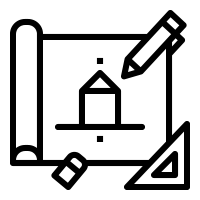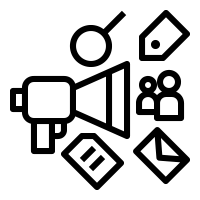What is Architect?
The architect is tasked with designing, designing new buildings or designing renovation projects for existing buildings. The architect must ensure that the building design matches the requirements requested by the client, functional, safe and economical. Architects also usually fully control the project that is being worked on from the beginning to the end, in collaboration with a number of other experts in the construction field.
Minimum education level
PT3
SPM
STPM
Diploma
Degree
Average Salary
Example of a Job Position
Task
Knowledge
Public Safety and Security
Knowledge of relevant tools, policies, procedures and strategies to support effective raid / patrol operations for local, provincial and national security, and protect people, data, property and institutions.
Mathematics
Knowledge of arithmetic, algebra, geometry, calculus, statistics, and their applications.
Customer and Personal Services
Knowledge of principles and processes to provide services for customers and personal. This includes assessing customer needs, meeting service quality standards, and evaluating customer satisfaction.
Administration and Management
Knowledge of business and management principles including strategic planning, resource allocation, human resource modeling, leadership techniques, production methods, and coordination between people and resources.
Engineering and Technology
Knowledge of practical applications in engineering and technology. This includes the application of principles, techniques, procedures and equipment for designing and producing various goods and services.
Design
Knowledge of techniques, equipment and design principles including in producing precision technical plans, blueprints, drawings and models.
Construction
Knowledge of materials, methods, and equipment for construction or repair of houses, buildings, and other structures, such as highways.
Skills
Active Listening
Give full attention to the words of others, set aside time to understand the points presented, ask questions appropriately, and not interrupt at the wrong time
Talking
Talk to others to convey information effectively
Complex Problem Solving
Identify complex problems and review related information in order to develop and evaluate options and solutions that can be applied.
Critical Thinking
Using logic and reasoning to identify the strengths and weaknesses of alternative solutions, conclusions, or approaches to the problems handled
Consideration and Decision Making
Consider the shortcomings and advantages of potential action choices to choose the most appropriate action.
Reading Understanding
Understand sentences and paragraphs written in work documents.
Operational Analysis
Analyze product requirements and requirements to make designs.
Coordination
Adjust the actions taken, with the actions of others.
Capability
-
1
Smooth Idea - The ability to generate many ideas for one topic (total ideas are the most important, not quality, truth, or creativity).
-
2
Information Arrangement - The ability to arrange various things and actions in a certain sequence or pattern according to the rules specified (for example: number patterns, letters, words, pictures, mathematical operations).
-
3
Oral Expression - The ability to communicate information and ideas when speaking, so that others can understand what is being conveyed
-
4
Deductive Reasoning - The ability to apply general rules to certain problems in order to produce reasonable answers.
-
5
Inductive Reasoning - The ability to combine pieces of information to form general rules and conclusions (including finding relationships between seemingly unconnected events).
-
6
Oral Understanding - The ability to listen and understand information and ideas conveyed through words and oral sentences
-
7
Problem Sensitivity - The ability to tell when something is wrong or maybe wrong. This does not involve solving the problem, only knowing if there is a problem.
-
8
Near Distance Vision - The ability to see details at close range (a few feet away from the object).
-
9
Visualization - The ability to imagine how something will look after being moved around or when parts are moved or reset.







